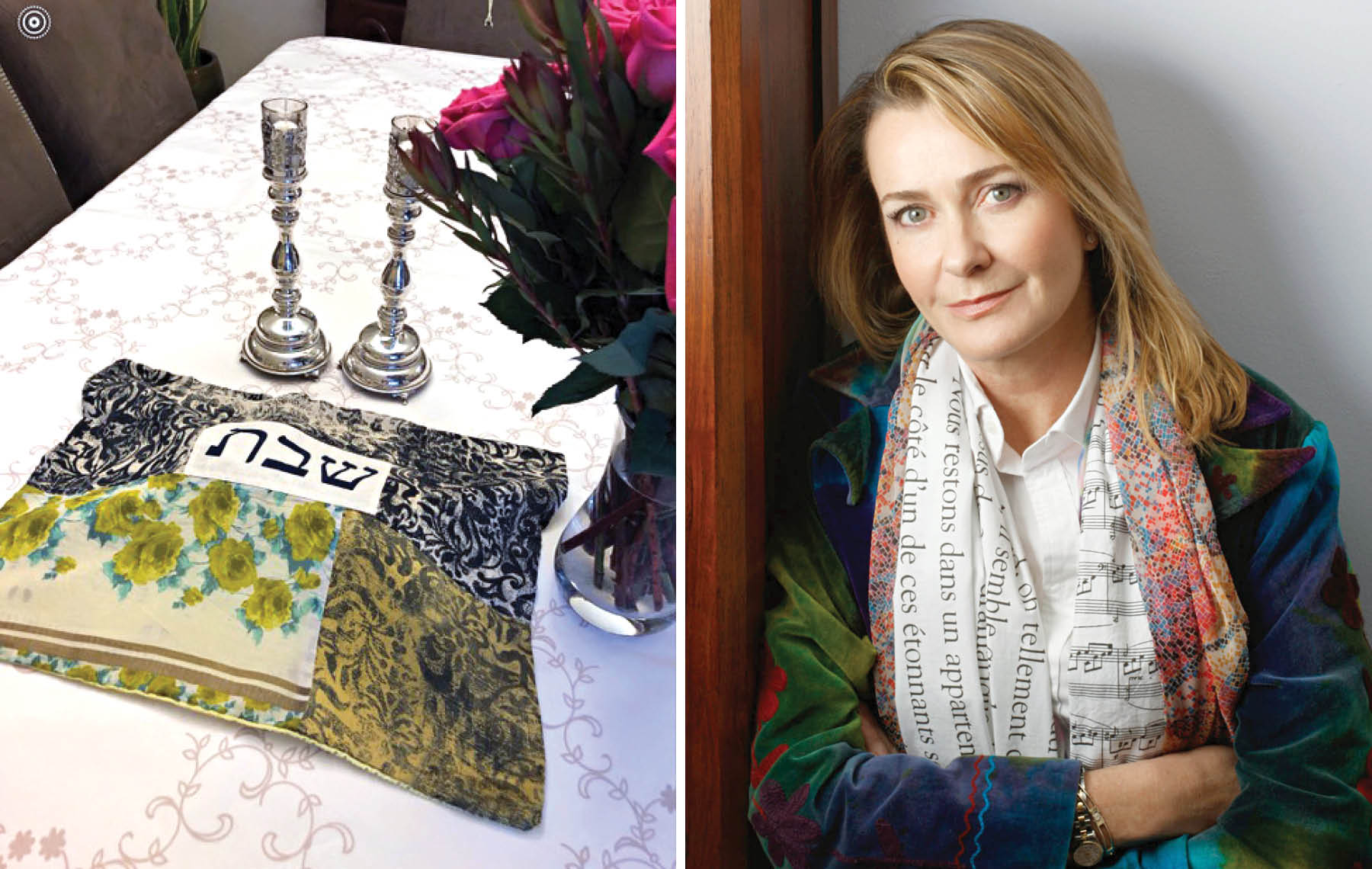
Originally from Spain, creative artist Almudena Solana has called Los Angeles home for the past several years. In Spain, she was a journalist and an author of several novels. She is also the creator of “Fabric Poetry”, one-of-a-kind scarves sold at the Los Angeles County Museum of Art (LACMA). Solana considers her portable, wearable art to be a natural extension of her writing background — an artistic form of expression that tells a story. She has expanded her appreciation of beauty and storytelling to the creation of one-a-kind challah covers, even though she isn’t Jewish.
Jewish Journal: What brought you to Los Angeles?
Almudena Solana: We moved to L.A. as a family about three years ago. We made the decision to move here because I wanted to push my work further, translate more of my novels, and work on adapting one of my novels into a screenplay.
JJ: What led you to start making challah covers?
AS: I love to tell stories. I’m a curious person, which is why I first went into journalism and then crossed over to fiction. After writing several novels, I started doing one-of-a-kind scarves. Then a friend saw my scarves and suggested I do challah covers. At first I didn’t know what a challah cover was. But I learned, and when I saw a Shabbat table set about a year ago, I thought it was so beautiful. I loved the beauty of the bread in the middle of the table with the cover — a perfect little cover. So I stated creating challah covers, and I’m passionate about doing them.
JJ: It sounds like you feel a connection to the Shabbat experience.
AS: Very much so. I feel almost like I do Shabbat at my house, because I love the concepts of quiet and calm and peacefulness. I want those concepts to be a part of my family and part of our values. I love to be surrounded by beauty, and I think the Shabbat experience is beautiful.
JJ: Did you learn about Shabbat from the same friend who encouraged you to make the challah covers?
AS: Yes. I met my friend Anne Goldin at the public library. I speak English, but it’s not my first language. So when we moved to Los Angeles I decided to get tutoring at the library to improve my English skills. Anne was one of the volunteers and we became good friends. She knew about my scarves. She introduced me to the idea [of challah covers] and taught me about them.
JJ: Do you feel a connection to the Jewish community?
AS: I feel very close to Jewish traditions and Judaism connects with me. From my friend Anne, to other Jewish people I’ve met, I’ve found the face of Judaism to be generous. I’m a very spiritual person and not against anyone or anything. I appreciate learning about diversity and other people. With all the world’s religions, we are all human. There is only one sky above us. It’s important to me to be a good person, and someone who practices the art of living. To me, a challah cover is part of the art of living. They are part of the peace that I want in my work and my life.
JJ: Where can people find your unique challah covers?
AS: They’re sold at the Sinai Temple Sisterhood Judaica Shop, the Mezuzah Gallery and, most recently, at the Skirball Center.
JJ: Are you going to be designing custom mezuzah covers as you do with your scarves?
AS: Yes. I see that as a natural progression and something I’d love to do. I would love to create challah covers that convey special meaning to people, that represent a part of their lives. One of the reasons I love creating these pieces of art that are one of a kind is because each human being is one of a kind. So to be able to customize them would be a way to recognize what is special and unique to someone. There are mass produced challah covers all over but, as I have been told, nobody is doing these one-of-a-kind covers. The people who buy them appreciate the artistry that goes into it.
JJ: What materials do you use?
AS: I love to put together textiles from all over the world. I tell a story with each challah cover and each has a title. It could be “Calm,” “After the Rain,” or “Sweet Home.” I’m inspired by those ideas. I travel and bring back fabric and different textures from everywhere. The fabric itself is an important piece of the cover and the story. I use silk, linen, organza, cotton and more. One challah cover can have up to seven types of fabric and textures. I believe in sustainability, not following what is trendy and stylish right at the moment. I want to create pieces that last, where the beauty is timeless. I pay attention to the small things, because they matter. This is very true with portable art.
JJ: Do you find that buyers have different design preferences?
AS: I see difference between the places I sell them. Mezuzah Gallery is more traditional and they ask me to do some more masculine designs. The ones they sell at the Sinai Temple are brighter. Joyful colors such as red and orange. And at the Skirball, there’s a variety.
JJ: Where can people find out more about your challah covers?
AS: The best place is on Instagram. I’m @rebeccabyfabricpoetry.
Allison Futterman is a writer based in North Carolina.





















 More news and opinions than at a Shabbat dinner, right in your inbox.
More news and opinions than at a Shabbat dinner, right in your inbox.